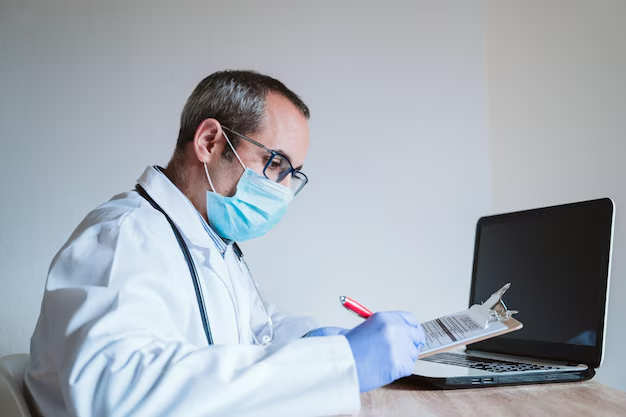Understanding ALS Testing: What You Need to Know
The world of medical diagnostics can be complex, particularly when faced with intricate conditions like Amyotrophic Lateral Sclerosis (ALS). If you're exploring how ALS is diagnosed, it's likely because you or someone you know is seeking clarity in a journey marked by uncertainty. With precision, compassion, and clear information, let's delve into the methods used to test for ALS and related insights that can guide anyone confronting this challenge.
What is ALS?
ALS, also known as Lou Gehrig's disease, is a progressive neurodegenerative disorder that affects nerve cells in the brain and spinal cord. This condition leads to a loss of muscle control and can impact walking, talking, eating, and even breathing over time. Recognizing and diagnosing ALS is no easy feat, given its symptoms often overlap with other neurological disorders.
Why Proper Testing is Crucial
Early and accurate diagnosis is critical in managing ALS. This process ensures patients receive appropriate care, start potential treatments, and plan for the future. Misdiagnosis can lead to unnecessary stress and interventions, making accurate testing an essential step in the journey.
How Is ALS Diagnosed?
Diagnosing ALS is more of a methodical exclusion process where various tests rule out other conditions that mimic its symptoms. Here are the primary methods used:
Neurological Examination
A detailed neurological examination is usually the first step. A neurologist checks:
- Muscle Strength and Tone: Evaluating for any weakness or muscle wasting.
- Reflexes: Testing for abnormal reflexes which may indicate nerve damage.
- Coordination and Balance: Noting any coordination issues or instability.
While these observations can't diagnose ALS on their own, they signal the need for further testing if abnormalities are detected.
Electromyography (EMG) and Nerve Conduction Study (NCS)
Electromyography (EMG) measures electrical activity in muscles and can reveal nerve dysfunction. It is often paired with a Nerve Conduction Study (NCS) to assess the speed of nerve signals.
- EMG: A needle electrode is inserted into muscles to detect electrical activity during rest and contraction.
- NCS: Electrodes stimulate nerves, and the response is measured to check the speed of signal travel.
These tests help determine if symptoms align with ALS or another neuromuscular condition.
MRI (Magnetic Resonance Imaging)
MRI scans are employed to obtain detailed images of the brain and spinal cord. While MRIs do not diagnose ALS, they can identify other causes such as tumors or spinal cord issues that might present similar symptoms. MRI helps ensure that ALS is differentiated from other treatable neurological disorders.
Blood and Urine Tests
Routine blood and urine tests are part of the diagnostic process to eliminate other diseases. Conditions like thyroid problems or vitamin deficiencies can mimic ALS symptoms. If confirmed, these are treatable, thus actively ruling out these possibilities is vital.
Lumbar Puncture (Spinal Tap)
In some cases, a lumbar puncture might be necessary to examine cerebrospinal fluid for indications of other conditions. By analyzing the fluid surrounding the brain and spinal cord, doctors can test for infections or autoimmune conditions.
Genetic Testing
As a minority of ALS cases are familial, genetic testing is sometimes performed to identify genetic mutations associated with the disease. This can be particularly relevant for individuals with a family history of ALS.
Complementary Processes in ALS Diagnosis
Observing Symptom Progression
ALS is progressive, meaning symptoms worsen over time. Following a possible ALS diagnosis, prolonged observation of symptom progress aids in confirming the diagnosis. Consistent monitoring helps distinguish ALS from conditions with fluctuating symptoms.
Clinical Trials and Research
Access to clinical trials can offer newer diagnostic approaches and contribute to ALS research. Involvement in trials not only broadens understanding but may also provide access to cutting-edge diagnostics or treatments.
Psychological and Emotional Assessment
Recognizing psychological health is crucial. An ALS diagnosis impacts the full spectrum of life, and supporting mental wellness is essential in providing comprehensive care. Psychological assessments or counseling might be recommended to help cope with the diagnosis.
The Road After Diagnosis
Practical Steps Forward
Once a diagnosis is made, discussing care plans with medical professionals becomes vital. This might include:
- Multidisciplinary Care Team: Involving neurologists, physiotherapists, speech therapists, and nutritionists ensures a rounded approach.
- Care Coordination: Establishing clear communication between healthcare providers and caregivers is crucial for seamless care.
Empowering Awareness and Education
Understanding ALS is empowering. Educating oneself, family, and friends about the condition enhances support networks. Engaging with ALS organizations and resources can offer guidance and community connection.
Future Directions
Advancements in diagnostics are ongoing, with technology playing an increasingly significant role. Enhanced imaging techniques, biomarkers, and artificial intelligence offer promising prospects for earlier and more precise ALS diagnosis in the future.
Key Takeaways on ALS Testing 🧠
- ALS is diagnosed through exclusion: No single test can diagnose ALS; a combination of examinations and tests rule out other conditions.
- Neurological exams and EMGs help identify nerve and muscle issues aligning with ALS symptoms.
- MRIs are crucial to rule out other neurological causes due to their detailed brain and spinal imagery.
- Blood, urine, and genetic testing identify treatable conditions with similar symptoms.
- Multidimensional care post-diagnosis includes supportive teams for physical and mental health.
- Engage with communities and trials for support and access to the latest in research and care.
If you or someone you know might have ALS, lean on informed discussions with healthcare professionals and access supportive resources for guidance through this complex journey.
